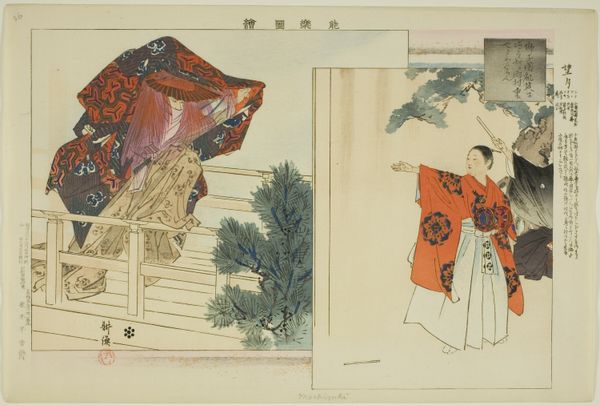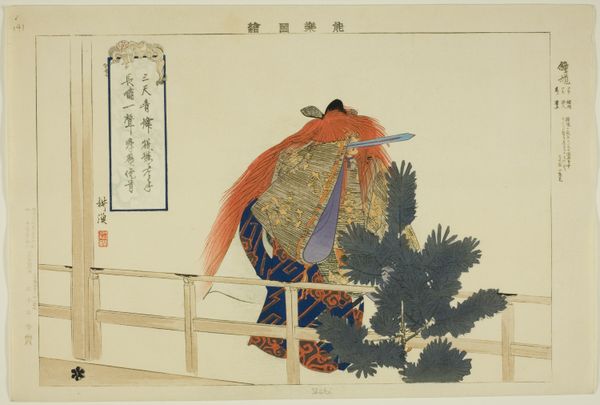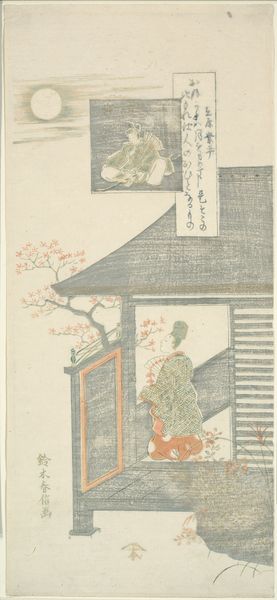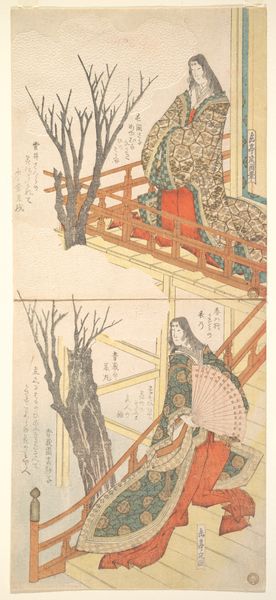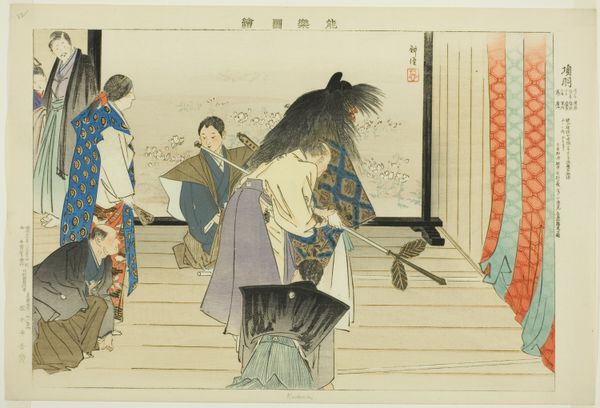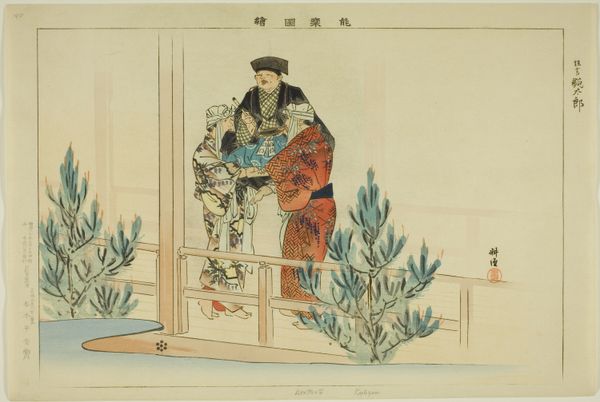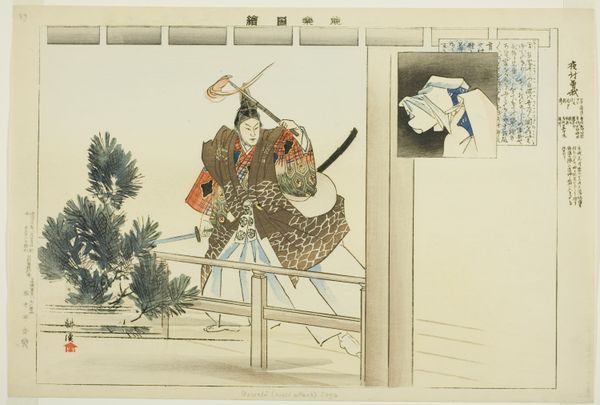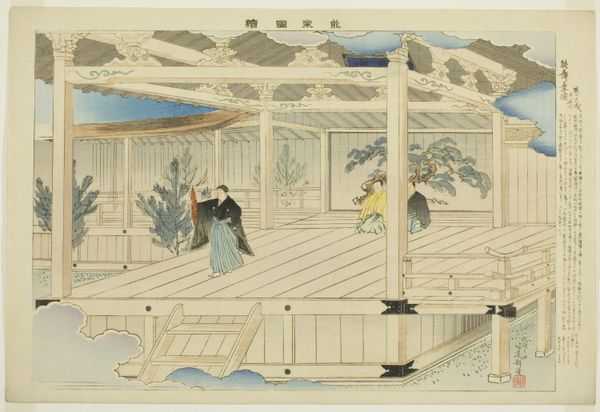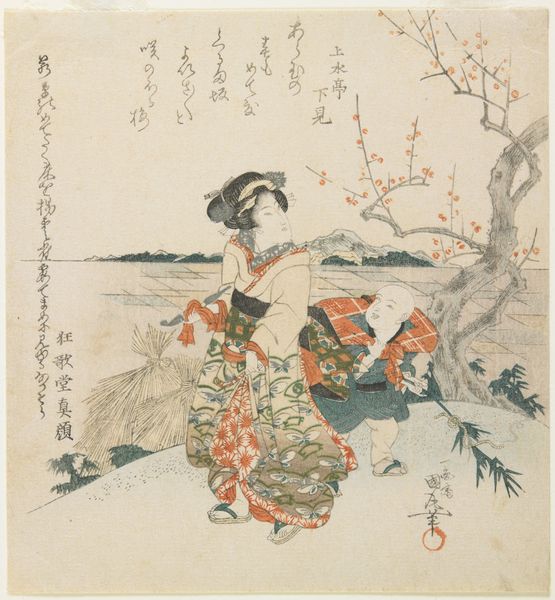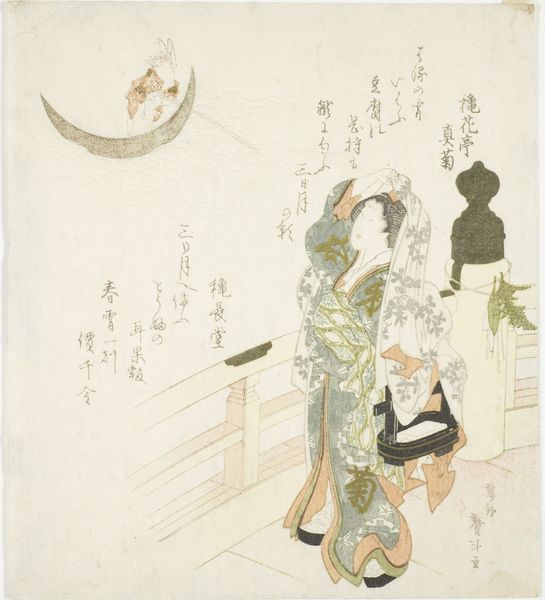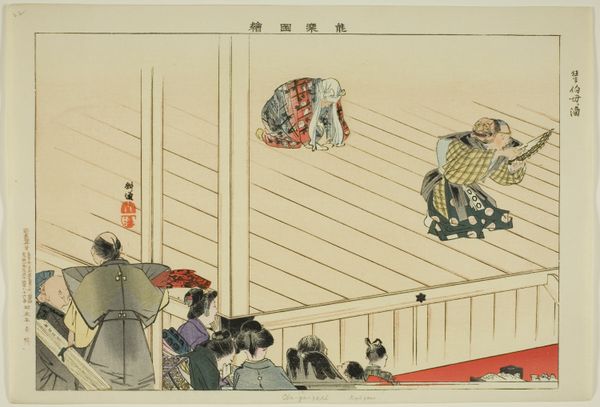
Iwafune, from the series "Pictures of No Performances (Nogaku Zue)" 1898
0:00
0:00
#
pasteup
#
water colours
# print
#
asian-art
#
japan
#
handmade artwork painting
#
spray can art
#
underpainting
#
painting painterly
#
watercolour bleed
#
watercolour illustration
#
mixed media
#
watercolor
Dimensions: Approx. 25.2 × 37.4 cm (10 × 14 4/3 in.)
Copyright: Public Domain
Editor: So, this print is titled "Iwafune, from the series 'Pictures of No Performances (Nogaku Zue)'", created in 1898 by Tsukioka Kōgyo. It’s at the Art Institute of Chicago. It feels really theatrical and dramatic, doesn't it? How do you interpret this work in the broader context of its time? Curator: Indeed. Consider the cultural resurgence in Japan during the Meiji era, when this print was made. There was renewed interest in traditional arts like Noh theater after periods of suppression during modernization efforts. Kōgyo, through his prints, was not just depicting Noh; he was actively participating in its revival and documentation. Editor: So, he saw himself as preserving a cultural record? Curator: Precisely. Notice the meticulous detail in the figure's costume and mask. These are not simply aesthetic choices, but ethnographic ones, aimed at preserving the precise visual elements of Noh performance for posterity. How do you think this print would have functioned in the late 19th century public sphere? Editor: I imagine it would be a way to showcase this unique art form, reaching people outside the theatre itself, maybe solidifying a sense of national identity during a period of rapid change? Curator: Yes, the print has public roles as well as acting as an archival document. The artist places his work in dialogue with both theatre enthusiasts as well as people with limited or no prior experience. Consider the sociopolitical implication for art, with its reproduction of culturally relevant topics in this period of cultural revival. Editor: It’s interesting to think about a print serving as both a performance record and a statement of cultural identity. Curator: Absolutely, and this intersection reveals much about the politics of imagery and its public role during the Meiji era. Looking at this today helps us understand that history and the performance of it in that era. Editor: That’s a completely different angle than I originally considered. It gives the print so much more weight and relevance. Thank you!
Comments
No comments
Be the first to comment and join the conversation on the ultimate creative platform.

